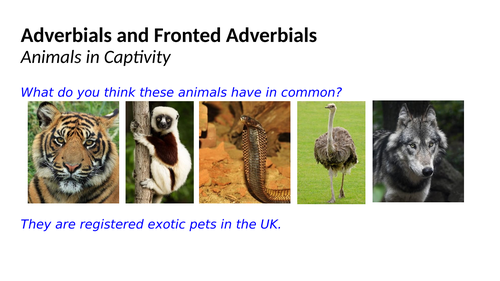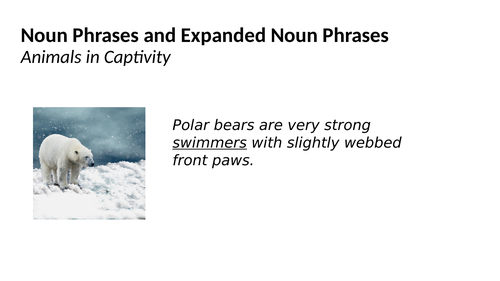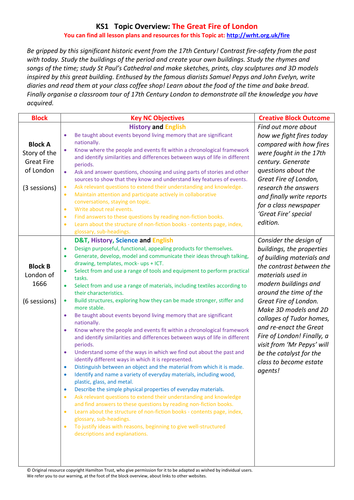
3k+Uploads
10009k+Views
11617k+Downloads
English

Graffiti – good or bad! - English Homework - UKS2
English Homework activity for UKS2:
Write a clear reasoned argument in the form of a newspaper article for or against graffiti in public spaces. Understand key features of arguments.
Looking for English planning? Using high quality texts as a starting point, our creative and stimulating English plans incorporate grammar teaching in context and offer meaningful writing opportunities. Find out more at Hamilton Trust.

Explain yourself properly - English Homework - UKS2
English Homework activity for UKS2:
Understand key features of explanations and write an explanation for how a favourite computer game, mobile phone, karaoke, record charts or football league tables work.
Looking for English planning? Using high quality texts as a starting point, our creative and stimulating English plans incorporate grammar teaching in context and offer meaningful writing opportunities. Find out more at Hamilton Trust.

Animal diary - English Homework - UKS2
English Homework activity for UKS2:
Put themselves in another’s shoes by writing an imaginative diary entry for a favourite animal.
Looking for English planning? Using high quality texts as a starting point, our creative and stimulating English plans incorporate grammar teaching in context and offer meaningful writing opportunities. Find out more at Hamilton Trust.

Hard spellings - English Homework - UKS2
English Homework activity for UKS2:
Identify and list some words that are difficult to spell. Test friends and family to see if they can spell these words.
Looking for English planning? Using high quality texts as a starting point, our creative and stimulating English plans incorporate grammar teaching in context and offer meaningful writing opportunities. Find out more at Hamilton Trust.

Adverbials and fronted adverbials - Year 4 SPAG
Adverbials and Fronted Adverbials
Revise how adverbials can give information about a verb, to do with time, place or manner. Note the punctuation of fronted adverbials.
SPAG resources that cover the following grammar objectives:
– Use fronted adverbials.
– Use commas after fronted adverbials; Use and understand the grammatical terminology in Appendix 2 accurately and appropriately when discussing their writing and reading (adverbials, fronted adverbials, comma, main clause, verb).
Included in this unit:
Up to 3 days of teaching.
Presentation that can be used on a variety of interactive whiteboards.
Group activity resources.
This SPAG Unit is part of a larger block on Persuasive Writing.
Find additional teaching on Hamilton’s Year 4 English Block about Persuasive Writing.

Noun phrases and expanded noun phrases; provoking emotion - Year 4 SPAG
Expanded Noun Phrases
Learn how noun phrases and expanded noun phrases can build images around a head noun. Consider the impact and test by replacing with a pronoun.
SPAG resources that cover the following grammar objectives:
– Use noun phrases expanded by the addition of modifying adjectives, nouns and preposition phrases.
– Use and understand the grammatical terminology in Appendix 2 accurately and appropriately (noun, adjective, determiner, adverb, preposition).
Included in this unit:
Up to 4 days of teaching.
Presentation that can be used on a variety of interactive whiteboards.
Group activity resources.
This SPAG Unit is part of a larger block on Persuasive Writing.
Find additional teaching on Hamilton’s Year 4 English Block about Persuasive Writing.

Identify correct uses of apostrophes and use in own writing - Year 4 SPAG
Uses of Apostrophes PowerPoint
Teach children that apostrophes can be used for possession, singular and plural, and also for contractions. Ensure that all uses are fully rehearsed and understood.
SPAG resources that cover the following grammar objectives:
– Indicate possession by using the possessive apostrophe with plural nouns.
Included in this unit:
Up to 4 days of teaching.
Presentation that can be used on a variety of interactive whiteboards.
Group activity resources.
This SPAG Unit is part of a larger block on Reports - Narratives of Liberation.
Find additional teaching on Hamilton’s Year 4 English Block about Reports - Narratives of Liberation.

Adverbials - Presentation & Exercises
Grammar teaching presentation and grammar exercises.
The cat themed teaching presentation includes 22 slides.
Revise verbs and then look at:
Adverbials
Prepositions
Fronted adverbials
How to punctuate fronted adverbials
How to use more than one adverbial in a sentence
Clear examples are provided throughout.
We then provide grammar exercises for children to:
Identify adverbials in a passage
Add adverbials to a sentence
Each collection of exercises is made up of three sets. Set A is the easiest or most accessible, Set C is the hardest or uses more complex language.
This resource is aimed at UKS2. Use the presentation to introduce or revise a grammatical concept as a stand-alone lesson or add on the accompanying exercises for children to practise and apply their knowledge.

Year 1 Fiction 3: Stories with repeating patterns and counting stories
Read a story with repeating patterns, Bringing the Rain to Kapiti Plain, by Verna Aardema. Retell the story using flow charts, write describing words and punctuate sentences. Read two counting stories Handa’s Hen by Eileen Browne and We All Went on Safari by Laurie Krebs, before guiding children to write their own. The Hamilton Group Reader, Boris and Sid go on a tram, is used to develop confidence in reading aloud.

The Great Fire of London - Diaries - Key Stage 1
Be gripped by this significant historic event from the 17th Century!
Find out about the famous diarists Samuel Pepys and John Evelyn. Write your own diary entries, including a realistic entry set during the Great Fire. Finally, share diaries in a ‘coffee house’ setting to celebrate the completion of this block.
Includes:
- Topic Overview
- Block Overview
- Lesson 01: Who ARE they?
Find out about famous diarists Samuel Pepys and John Evelyn; learn about the art of diary writing and write your own diary entry.
- Lesson 02: FREEZE!
Role-play scenes from the Great Fire of London that were captured in diary entries at the time; Perform and perfect your scenes; capture a key moment in a ‘freeze frame’ photograph.
- Lesson 03: What did you say?
Look carefully at your freeze frame pictures; write speech bubbles to depict the emotions experienced by the people in the scene.
- Lesson 04: Quills and ink!
Learn about the writing implements of the 17th Century; make your own quill and ink; write a realistic looking diary page about an incident during the Great Fire of London 1666.
- Lesson 05: Coffee House!
Use paint to recreate an authentic looking diary cover for your historic diary; read your diary to other children in a ‘coffee house’ setting to celebrate the completion of this block.
Find more lesson plans and resources at www. hamilton-trust.org.uk.










